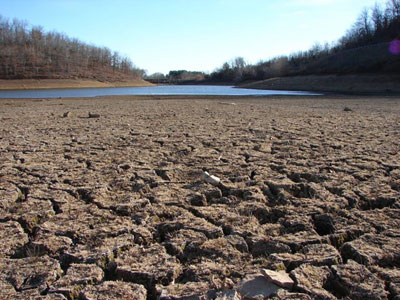By John-Miguel Dalbey

The recent drought sweeping the nation’s west has many experts questioning where the U.S. will be acquiring new sources of fresh water in the near future. According to a recent survey of over 600 scientists and environmental policymakers, the results of which were published in the journal BioScience, the issue of water availability is a number-one priority in terms of resource scarcity within the next 10 years. In an interview with Environment & Energy, Murray Rudd, professor of environmental economics at the University of York and author of the survey, states that “long-term water supply was a very large concern among the natural resource managers and academics that answered this survey.” While the survey’s top question, “What quantity and quality of surface and groundwater will be necessary to sustain U.S. human populations and ecosystem resilience during the next 100 years?,” made no direct mention of climate change, Rudd claims indirect worries over climate change pushed this question to the forefront. “Anytime that you’re dealing with water, climate change and change in precipitation patterns are certainly in the background.” This is most likely due to the implied knowledge of the relationship between drought and climate change: As climate change becomes an increasingly present and real issue, rising temperatures will have drastic effects on the world’s water cycle.
California in particular has been hit heavily by the recent drought, with water rationing measures being implemented. American Forests has conducted reforestation efforts in the area, as well international reforestation efforts in both Honduras and Ghana, in order to prevent drought. Forest cover helps retain a certain amount of water within an area as vegetation traps moisture and releases into the air via transpiration. Root systems help trap water underground as well; therefore, protecting forests will aid in staving off even more intense droughts.